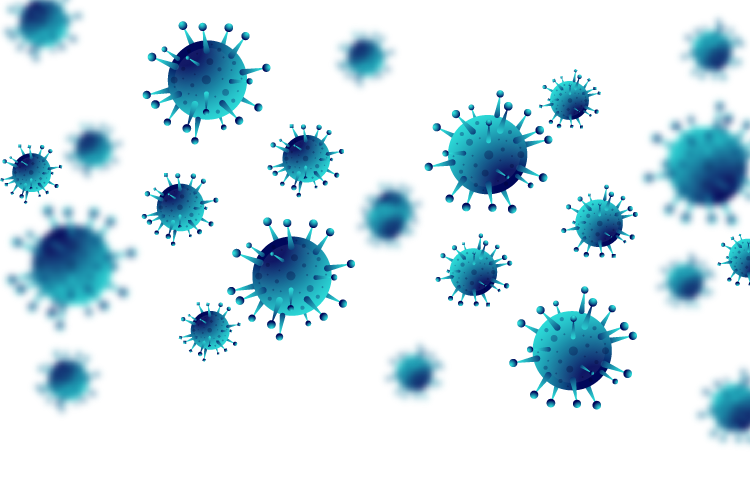
Lessons from the COVID-19 pandemic
What are our options to contain spread?
The number of COVID-19 cases in Belgium rapidly increased in early March 2020 and we braced ourselves for the first wave. In the absence of vaccines or targeted treatments, what are our options for coping with this tsunami?
Crush the curve
The first strategy is to eradicate the virus. This approach comes down to getting the reproduction number smaller than one, and preferably as small as possible, by imposing strict contact restrictions. We saw this kind of far-reaching quarantine measure in large parts of China, for example.
It is the quickest way to halt viral transmission, but the downside is that a large part of the population will not be infected and therefore remain susceptible to future infections. In other words, virtually no group immunity is built up and any relaxation of measures carries the risk that the epidemic will flare up again in full force. Close monitoring is therefore imperative to nip new outbreaks of infection in the bud as quickly and completely as possible.
The ideal tools for a successful crush-the-curve approach are rapid testing methods that are both reliable and inexpensive and thus readily available to all. Extensive contact tracing, for example using smartphone apps, is indispensable. Travel is problematic in this scenario because infected persons from other regions can cause new outbreaks, unless everyone who arrives is quarantined preemptively.
The characteristics of the new coronavirus compromise the success of such an eradication approach. For starters, the incubation period for COVID-19 is relatively long. To make matters worse, a significant part of infections occurs pre-symptomatically or through asymptotic individuals. That makes it relatively easy for an outbreak to spread under the radar, with intervention implemented too late to effectively halt it.
This was certainly true in the initial phase in Wuhan, where health care providers and authorities were taken completely by surprise by the new virus. But even in Europe, after the outbreak in northern Italy, where quite a few international ski travelers were infected, the danger still proved difficult to control. All of a sudden, COVID-19 was everywhere.
Flatten the curve
The second strategy is to limit the damage. In this case, extensive measures are still taken to limit the circulation of the virus: fewer social contacts, or at least less risky social contacts, e.g. at one and a half meters, outdoors only, with mouth mask, etc. The spread of the virus should be controlled to the extent that the number of critically ill patients remains manageable. In other words, measures are aimed at avoiding the health care system to be overwhelmed.
The difference between crushing and flattening the curve is that in the second case, it is the intention that more and more people will gradually become infected, and immunity will slowly but surely emerge. This should happen at a pace healthcare workers can keep up. Measures that expand care capacity, temporary or permanently, also help in navigating this careful balance.
Contact tracing and reliable testing are important in this approach as well, as are isolation and quarantine measures, although these are applied flexibly to the extent possible so that important sectors of society can continue to operate up to a certain level--all depending on how much virus is circulating.
Flattening the curve would become the approach of just about all countries during the first wave in Europe, some more stringent, such as Italy or Spain, than others, such as Sweden.
Herd immunity
The third strategy is to let the virus run its course to build up herd immunity as quickly as possible. With herd immunity, the fraction of recovered people, who are immune to a new infection for a period of time, is large enough so that new flare-ups naturally die out because there are not enough susceptible people for the virus to spread.
This approach will basically let the epidemic rage through the population, after which the virus could become seasonal, much like the flu and other typical cold viruses. A major obstacle with this strategy, however, is that a lot of infected people will be seriously ill at the same time, and the healthcare system will inevitably be overburdened, causing a lot of direct and indirect casualties.
Herd immunity is effective when a significant proportion of the population is immune to new infection. Exactly how much remains difficult to estimate. Success depends on how strong and lasting immunity after natural infection is.
The value of R0 and the length of the generation interval help determine how long it may take for a population to build up immunity, even in the absence of measures. In the case of the COVID-19 pandemic, this appears to be rather long.
In Belgium, the National Security Council takes a flatten-the-curve approach; but first the spread must be drastically reduced. Thomas Pueyo called this "the hammer and the dance": respond quickly with decisive and far-reaching measures at first (the hammer), followed by a long-term approach to control the virus until vaccines are available (the dance).